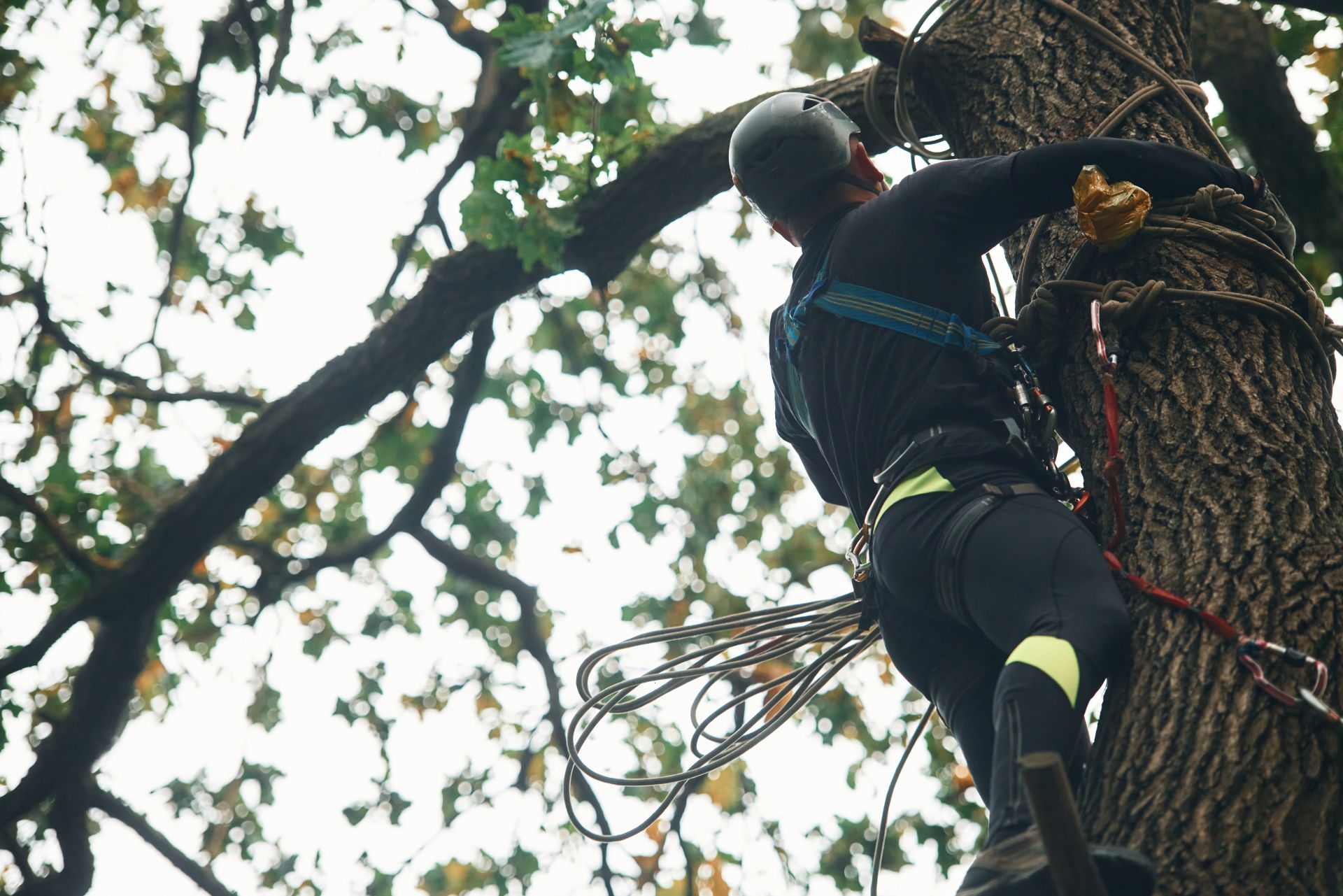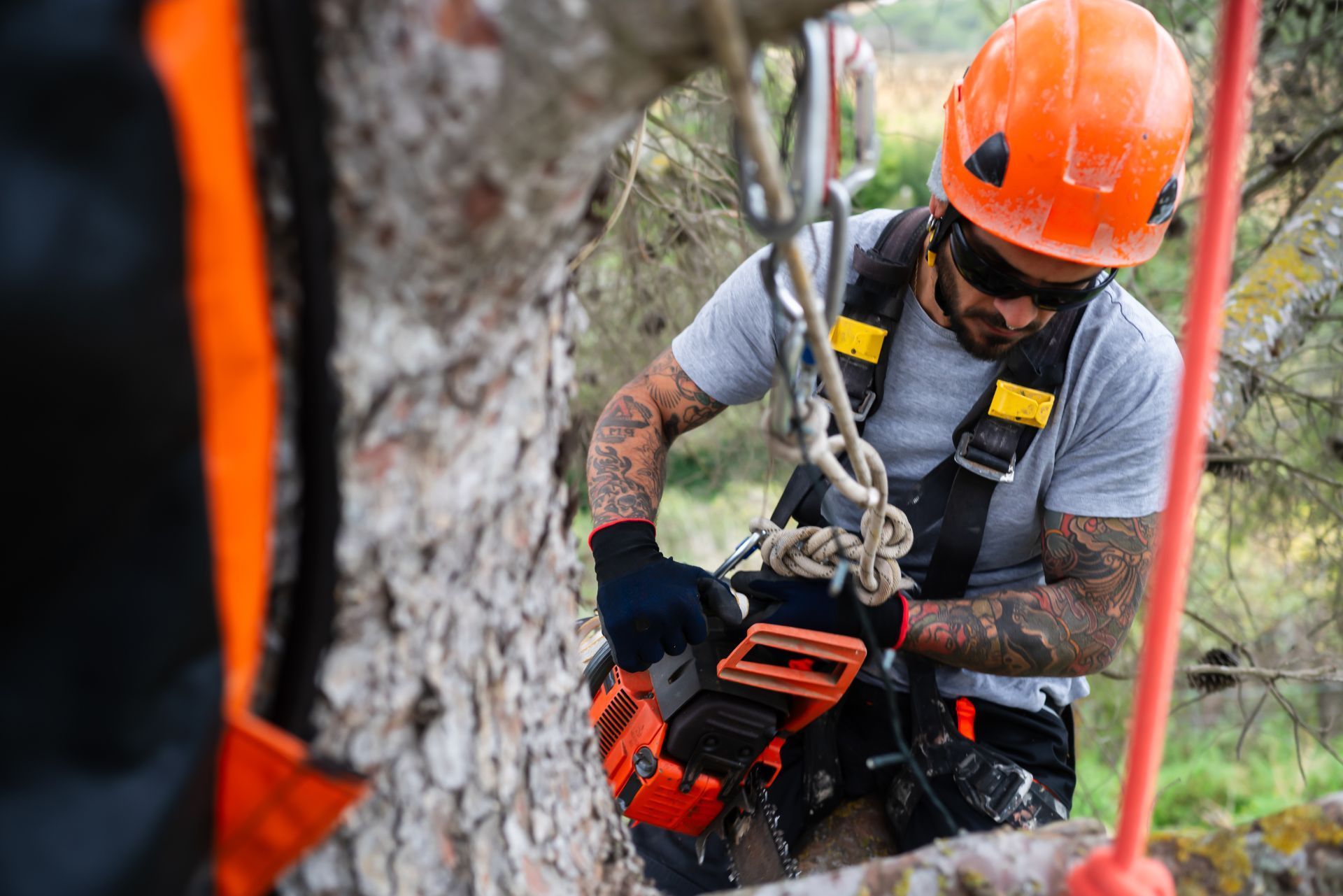Top 3 Recommended Policies
Index
Contact Us
Phone
Location
In the vibrant state of Illinois, arborists play a crucial role in maintaining the health and beauty of urban and rural landscapes. However, like any profession, arborists face unique risks that necessitate specialized insurance coverage. This article delves into the essential aspects of Illinois arborist insurance, providing a comprehensive overview of what it entails, why it’s important, and how to choose the right coverage for your needs..
Understanding Arborist Insurance
Arborist insurance is a specialized form of coverage designed to protect professionals in the tree care industry. This insurance not only safeguards the arborist's business assets but also provides liability protection against potential claims arising from their work.
What Does Arborist Insurance Cover?
Arborist insurance typically encompasses several key areas of coverage. These include general liability, workers' compensation, equipment coverage, and commercial auto insurance. Each of these components plays a vital role in ensuring the arborist is adequately protected against various risks.
General liability insurance covers claims related to bodily injury or property damage that may occur during the course of work. For instance, if a tree falls and damages a client's property, this insurance would help cover the costs associated with the damage. Additionally, it can also protect against claims of negligence, such as if a client alleges that the arborist failed to properly assess a tree's health before performing work, leading to further issues.
Workers' compensation is crucial for arborists who employ staff. This insurance provides medical benefits and wage replacement for employees who are injured on the job, ensuring that they receive the necessary care without financial burden. Furthermore, it can also cover rehabilitation costs, which can be essential for employees recovering from serious injuries, allowing them to return to work more quickly and safely.
The Importance of Arborist Insurance
Having arborist insurance is not just a legal requirement; it is a fundamental aspect of running a responsible and sustainable business. Without proper coverage, arborists risk facing significant financial losses due to accidents, injuries, or property damage. This risk is heightened in an industry where the nature of the work often involves heavy machinery, heights, and unpredictable environmental factors.
Moreover, clients often look for proof of insurance before hiring an arborist. Having the right insurance can enhance credibility and instill confidence in potential customers, setting a professional tone for the business relationship. In addition to attracting clients, being insured can also open doors to larger contracts and partnerships, as many commercial clients and municipalities require proof of insurance as a prerequisite for bidding on projects. This not only helps in securing jobs but also fosters a sense of trust and professionalism in the arborist's services.

Types of Coverage Available
Choosing the right type of coverage is essential for any arborist. Understanding the various options available can help in selecting a policy that best fits the specific needs of the business.
General Liability Insurance
General liability insurance is perhaps the most critical coverage for arborists. It protects against third-party claims for bodily injury, property damage, and personal injury. This type of insurance is particularly important in the tree care industry, where accidents can happen unexpectedly.
For example, if a client or a bystander is injured while work is being performed, general liability insurance would cover medical expenses and legal fees, protecting the arborist's financial interests. Additionally, this insurance can also cover damages to a client's property, such as if a tree falls unexpectedly during a trimming session, causing damage to a fence or vehicle. Having this coverage not only safeguards the business but also builds trust with clients, who can feel secure knowing that they are protected against unforeseen incidents.
Workers' Compensation Insurance
For arborists with employees, workers' compensation insurance is not only a legal requirement in Illinois but also a protective measure for both the employer and employees. It covers medical costs and lost wages for employees who suffer work-related injuries.
In the physically demanding field of arboriculture, the risk of injury is heightened. Workers' compensation ensures that employees receive proper care, which can also lead to higher employee morale and retention rates. Furthermore, providing this coverage demonstrates a commitment to employee safety and well-being, which can enhance the company's reputation within the community. In an industry where teamwork and trust are paramount, knowing that workers are protected can foster a more cohesive and motivated workforce.
Equipment Coverage
Arborists rely heavily on specialized equipment such as chainsaws, chippers, and climbing gear. Equipment coverage protects against loss or damage to these essential tools, whether due to theft, vandalism, or accidental damage.
Investing in equipment coverage can save arborists from significant financial setbacks, as the cost of replacing or repairing specialized tools can be substantial. Moreover, this coverage can extend to rental equipment, which is often necessary for larger jobs or when specific tools are temporarily unavailable. By ensuring that all tools are protected, arborists can maintain operational efficiency and avoid delays that could impact client relationships. Additionally, having comprehensive equipment coverage can allow arborists to take on more challenging projects, knowing they have the financial backing to handle any unforeseen equipment issues that may arise during the job.
Factors Influencing Insurance Costs
The cost of arborist insurance can vary widely based on several factors. Understanding these factors can help arborists find the most cost-effective coverage for their needs.
Business Size and Revenue
The size of the business and its annual revenue are significant determinants of insurance costs. Larger businesses with more employees and higher revenue typically face higher premiums due to the increased risk associated with larger operations.
Conversely, smaller businesses may benefit from lower premiums, but they must still ensure they have adequate coverage to protect against potential liabilities. For instance, a small, family-run arborist business may have lower operational risks, but they should consider the unique challenges they face, such as limited resources for training and safety equipment. Investing in safety measures and employee training can not only enhance their service quality but may also lead to reduced insurance costs over time.
Type of Services Offered
The specific services provided by an arborist can also influence insurance costs. For instance, arborists who offer tree removal services may face higher premiums due to the increased risk of accidents compared to those who focus solely on tree maintenance.
Understanding the risk profile associated with different services can help arborists tailor their insurance coverage appropriately. Additionally, offering specialized services, such as pest management or tree health assessments, may require different types of coverage, which could further impact overall insurance costs. Arborists should also consider the seasonal nature of their work; during peak seasons, the demand for certain services might increase, leading to a higher risk of accidents and potential claims, thereby affecting insurance premiums.
Claims History
An arborist's claims history can significantly impact insurance premiums. A history of frequent claims may result in higher rates, as insurers view this as an increased risk. On the other hand, a clean claims history can lead to lower premiums and potential discounts.
Moreover, maintaining a good claims history is not just about avoiding accidents; it also involves proactive risk management strategies. Arborists can implement safety protocols, conduct regular equipment inspections, and ensure that all employees are adequately trained in safety practices. These measures not only enhance the safety of their operations but can also demonstrate to insurers that they are committed to minimizing risk, potentially leading to more favorable insurance terms and lower costs. Keeping detailed records of safety training and incident reports can further support their case when negotiating with insurance providers.

Choosing the Right Insurance Provider
Finding the right insurance provider is crucial for arborists seeking coverage. The choice of provider can affect not only the cost of premiums but also the quality of service and support received. Arborists face unique risks associated with their work, such as potential injuries from falling branches or equipment malfunctions, making it imperative to have a policy that adequately protects them and their business.
Researching Insurance Companies
When selecting an insurance provider, it is essential to conduct thorough research. Look for companies that specialize in arborist insurance or have a strong understanding of the tree care industry. Reading reviews and seeking recommendations from fellow arborists can provide valuable insights into the reliability of different providers. Additionally, attending industry conferences or workshops can also be a great way to network and gather information about reputable insurance companies that cater specifically to tree care professionals.
Furthermore, consider the financial stability of the insurance company. A provider with a strong financial rating is more likely to be able to pay out claims when needed. Resources like A.M. Best or Standard & Poor's can offer ratings that help gauge the financial health of an insurance company. Understanding the claims process and the average time it takes for claims to be resolved can also be beneficial in ensuring that you choose a provider who will support you when it matters most.
Comparing Quotes
Once potential providers have been identified, obtaining quotes from multiple companies is a wise step. This allows for a comparison of coverage options, premiums, and deductibles. Be sure to review the fine print and understand what is included in each policy. It's also advisable to inquire about any discounts that may be available, such as those for bundling multiple policies or for maintaining a good safety record.
It’s important to remember that the cheapest option may not always be the best. Consider the level of coverage and the reputation of the insurance company when making a decision. Additionally, look into the customer service aspect of each provider; a company that is responsive and easy to communicate with can make a significant difference when you need assistance or have questions about your policy. Engaging with an insurance broker who understands the arborist industry can also provide tailored advice and help navigate the complexities of different policies, ensuring that you find the best fit for your specific needs.
Common Exclusions in Arborist Insurance
While arborist insurance provides essential coverage, it’s important to be aware of common exclusions that may apply. Understanding these exclusions can help arborists avoid unexpected gaps in coverage.
Pre-Existing Conditions
Many insurance policies will not cover damages or injuries that were known or existed prior to the policy's start date. This means that if an arborist has a history of claims related to a specific issue, future claims for that issue may not be covered.
It’s crucial for arborists to disclose all relevant information when applying for insurance to avoid complications later on. Furthermore, keeping detailed records of past incidents and maintenance can be beneficial. This documentation not only aids in transparency with insurers but also helps arborists identify patterns that could lead to future claims, allowing them to take proactive measures to mitigate risks.
Negligence or Misconduct
Insurance policies typically do not cover damages resulting from negligence or intentional misconduct. For instance, if an arborist fails to follow safety protocols and an accident occurs, the insurance company may deny the claim based on negligence.
Maintaining high standards of safety and professionalism is essential not only for the well-being of employees and clients but also for ensuring coverage in the event of an incident. Regular training sessions and safety drills can significantly reduce the likelihood of accidents. Additionally, implementing a robust safety management system can help identify potential hazards before they lead to incidents, thereby reinforcing the arborist's commitment to safety and potentially influencing insurance terms favorably.
Contractual Liability
Some policies may exclude coverage for liabilities assumed under contracts. If an arborist signs a contract that includes specific liability clauses, the insurance may not cover claims arising from those clauses.
It’s advisable to review contracts carefully and consult with an insurance professional to understand the implications of any contractual obligations. Furthermore, negotiating contract terms can be a strategic approach to ensure that liability clauses are reasonable and manageable. Arborists should also consider including indemnity clauses that protect them from third-party claims, which can provide an additional layer of security in their business dealings. Understanding the full scope of contractual liability can empower arborists to make informed decisions that safeguard their interests.
Tips for Lowering Insurance Premiums
While insurance is a necessary expense, there are several strategies arborists can employ to lower their premiums without sacrificing coverage.
Implementing Safety Protocols
Establishing and adhering to strict safety protocols can significantly reduce the risk of accidents and injuries. Insurance companies often provide discounts for businesses that demonstrate a commitment to safety.
Regular training sessions for employees on safety practices can also contribute to a safer work environment and potentially lower insurance costs.
Bundling Policies
Many insurance providers offer discounts for bundling multiple policies. Arborists may find that combining general liability, workers' compensation, and equipment coverage under one provider can lead to significant savings.
It’s worth discussing bundling options with insurance agents to explore the best deals available.
Increasing Deductibles
Choosing a higher deductible can lower premiums, but it’s essential to ensure that the deductible is an amount the business can comfortably afford in the event of a claim.
Carefully consider the financial implications of higher deductibles and weigh them against potential savings on premiums.
The Claims Process
Understanding the claims process is vital for arborists to ensure they can navigate it effectively when needed. Knowing what to expect can alleviate stress during what can be a challenging time.
Reporting a Claim
When an incident occurs that may require a claim, the first step is to report it to the insurance provider as soon as possible. Most companies have specific procedures for filing claims, which can often be initiated through a phone call or online portal.
Gathering all necessary documentation, such as photos of the incident, witness statements, and any relevant contracts, can expedite the claims process.
Claim Investigation
After a claim is reported, the insurance company will typically conduct an investigation to assess the validity of the claim. This may involve reviewing documentation, interviewing witnesses, and evaluating the circumstances surrounding the incident.
Cooperating with the insurance adjuster and providing any requested information can help ensure a smooth investigation process.
Claim Resolution
Once the investigation is complete, the insurance company will determine whether the claim is valid and how much compensation will be provided. If the claim is approved, the insurer will issue payment based on the terms of the policy.
In cases where a claim is denied, the insurance company should provide a clear explanation for the denial. Arborists have the right to appeal the decision and may seek legal counsel if necessary.
Conclusion
Illinois arborist insurance is an essential component of running a successful tree care business. Understanding the various types of coverage available, the factors influencing insurance costs, and the claims process can empower arborists to make informed decisions about their insurance needs.
By investing in the right insurance coverage, arborists can protect their business, employees, and clients, ensuring a sustainable and thriving operation in the beautiful landscapes of Illinois.

